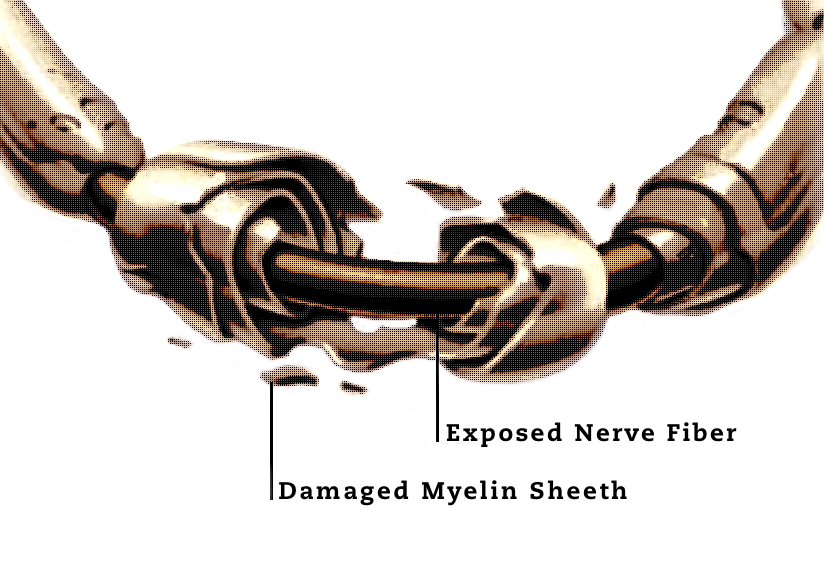What is Chronic Inflammatory Demyelinating Polyneuropathy (CIDP)?
CIDP is a neurological disorder characterized by gradually (over months or years) increasing weakness of the legs and arms. It is caused by damage to the protective covering of the nerves, called myelin. Symptoms are variable and may be mild to debilitating.
How is it diagnosed?
A patient with CIDP typically presents with difficulty walking which progressively worsens over months to years. Weakness, tingling or other abnormal sensations may also be experienced, and usually begin in the fingers or toes (on both sides of the body). Physical examination will usually show loss of reflexes, such as the knee and ankle jerk. Evaluation by a neurologist will often include an electrical test, a nerve conduction velocity-electromyography study. Your doctor may obtain blood and urine tests, including analysis of proteins. CIDP is usually a chronic condition, which means that it may require long-term treatment.
How is it treated?
Several treatment options are available. These include steroids, plasmapheresis and intravenous immune globulin (IVIG). The goals of treatment are to stop further damage to the myelin, prevent damage to the nerve fibers (axons), alleviate symptoms and prevent relapse and, if possible, create an environment that allows the myelin to regenerate.
Resources:

Myasthenia Gravis
MG is a chronic autoimmune neuromuscular disorder characterized by weakness of the voluntary muscle groups, which are the muscles we use to perform physical activities. For reasons that are not clearly understood, the immune system of patients with MG makes antibodies against the receptor sites of the neuromuscular junction.
Multifocal Motor Neuropathy
MMN (Multifocal Motor Neuropathy) is a rare disorder in which focal areas of multiple motor nerves are attacked by one’s own immune system. Typically, MMN is slowly progressive, resulting in asymmetrical weakness of a patient’s limbs.
CIDP
Chronic Inflammatory Demyelinating Polyneuropathy (CIDP) is a neurological disorder characterized by gradually (over months or years) increasing weakness of the legs and arms. It is caused by damage to the protective covering of the nerves, called myelin. Symptoms are variable and may be mild to debilitating.
Guillain-Barré Syndrome
Guillain-Barré syndrome (GBS) is a rare neurological disorder in which the body’s immune system mistakenly attacks part of its peripheral nervous system—the network of nerves located outside of the brain and spinal cord.
Myositis
Myositis means inflammation of the muscles that you use to move your body. An injury, infection, or autoimmune disease can cause it. Two specific kinds are polymyositis and dermatomyositis. Polymyositis causes muscle weakness, usually in the muscles closest to the trunk of your body. Dermatomyositis causes muscle weakness, plus a skin rash.
Lambert-Eaton Myasthenic Syndrome
Lambert-Eaton myasthenic syndrome (LEMS) is a rare autoimmune disorder of the neuromuscular junction. It is a miscommunication between the nerve cell and the muscles that lead to the gradual onset of muscle weakness.
Amyotrophic Lateral Sclerosis
Amyotrophic lateral sclerosis (ALS) is a group of rare neurological diseases that mainly involve the nerve cells (neurons) responsible for controlling voluntary muscle movement (e.g. chewing, walking, and talking). The disease is progressive, and symptoms get worse over time. Currently, there is no cure for ALS and no effective treatment to halt, or reverse, the progression of the disease.
Muscular Dystrophy
Muscular dystrophies are a group of muscle diseases caused by mutations in a person’s genes. Over time, muscle weakness decreases mobility, making everyday tasks difficult. There are many kinds of muscular dystrophy, each affecting specific muscle groups, with signs and symptoms appearing at different ages, and varying in severity.








